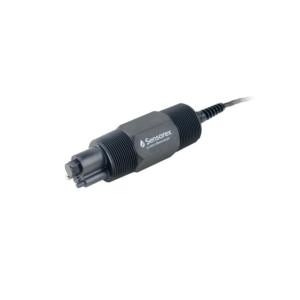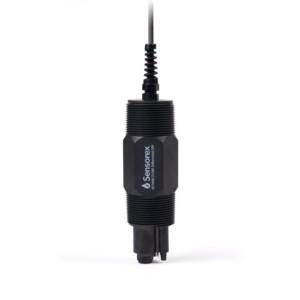When you’re testing the quality of water, it’s important that you’re aware of oxidation reduction potential and what this measurement indicates. ORP is a type of measurement that identifies the ability a substance has to reduce or oxidize another substance. The electrodes that are placed within an ORP sensor are able to take ORP measurements in water and similar solutions. When the ORP sensor provides you with a negative reading, this means that the substance you’re measuring is a reducing agent. On the other hand, positive readings indicate that the solution is a kind of oxidizing agent.
Before you start performing liquid analysis, you should understand what reduction and oxidation are. Oxidation is a chemical reaction that occurs when a substance doesn’t contain enough electrons and needs to acquire them from another agent in the solution. These substances will give you positive readings when using an ORP sensor, which is why they are considered to be oxidizing agents. When electrons have more than enough ions, they may be able to provide some ions to various oxidizing agents. These agents are referred to as reducing agents and will always produce negative ORP readings.
While testing the quality of water, ORP readings will tell you how contaminated or sanitized the water is. In the event that water is treated for recycling or consumption purposes, the sanitized water will have a higher ORP measurement. On the other hand, contaminated water usually has low ORP readings. Oxidation reduction potential sensors are comprised of two separate electrodes and have a design that’s similar to what’s used with pH sensors.
The two electrodes include a reference electrode and an ORP electrode. When the ORP electrode is placed in the solution, it will either accept electrons from a reduction agent or give electrons to an oxidizing agent. This process will continue until a measurement is obtained that equals the exact ORP of the solution. This article offers an in-depth look at ORP sensors and how they can be used for liquid analysis.
How and Why is ORP Used?
Oxidation reduction potential is a highly important reading when you’re attempting to identify the quality of water or a similar solution. This specific type of measurement can determine if one substance is able to reduce or oxidize another substance. If you receive a high ORP reading, this means that the solution the ORP sensor is placed in should be an oxidizing agent. Lower readings indicate the opposite.
While there are plenty of reasons why the ORP measurement is used, likely the most important reason is to ascertain how contaminated or sanitized water is. Whether you want to make sure that water is clean enough to drink or need to keep your boiler water free from contaminants, the ORP measurements you obtain will give you everything you need to determine if further sanitation or disinfection is necessary. In order for water to be safe enough to recycle or consume, it must have a high ORP reading, which means that the water is properly sanitized.
When water is deemed to be safe enough to drink, it usually has an ORP reading that ranges from 200-600mV. In comparison, readings that extend past -100mV indicate that the water may be too contaminated for consumption. Without these readings, it can be difficult to identify how contaminated or sterilized water is. ORP readings are particularly important when you want to make sure that the water is nearly free from contaminants. While disinfected water will provide you with ORP readings of around 600-700mV, the ORP readings for fully sterilized water extend past 800mV. Understanding the various factors that can alter ORP readings will allow you to identify why the quality of your water is changing.
What Do ORP Sensors Measure?
ORP sensors are able to provide a wide range of different measurements that can be useful for numerous applications. The primary applications that ORP sensors are used with include:
- Chlorine and disinfection
- Cooling towers
- Swimming pools
- Water treatment
- Poultry processing
- Pulp bleaching
When looking specifically at swimming pools, ORP is commonly used to test the quality of water in chlorinated swimming pools. Since ORP is directly affected by every agent that’s present in the water, ORP sensors can provide you with additional information that you wouldn’t obtain by solely using pH sensors. A pH sensor is only able to recognize hydroxide ions and hydrogen ions. If you have a larger pool installed in your yard, there’s a decent chance that the pool is already outfitted with an inline ORP sensor. If it doesn’t, there are many portable ORP sensors that you can obtain.
When you decide to add chlorine to your pool water, the chlorine will give up surplus electrons, which will oxidize any harmful bacteria that are present in the water. When chlorine electrons are active, the ORP readings in the water will increase to account for the introduction of an oxidizing agent. If you decide to take measurements of your chlorinated pool water, you should obtain readings that range from 650-750mV. These readings will decrease over time as the chlorine in the water breaks down and begins to dissipate. Even though ORP readings usually match the amount of sanitizer that’s present in your pool, it’s important to understand that ORP doesn’t directly measure the sanitizer levels in your pool. Instead, these sensors measure the net reduction and oxidation properties for all agents.
As mentioned earlier, anyone who uses an ORP sensor to measure the effects of disinfection techniques should obtain readings that extend from 600-700mV. In fact, these readings are very similar to what you would obtain when measuring pool water after chlorine has been added to it. When swimming pools and hot tubs haven’t been chlorinated, you can expect ORP readings to be around 500mV.
For cooling towers and aquaculture applications, the ORP readings that you obtain should extend from 200-400mV. If you get readings that are lower than 200mV in cooling tower water, the water may contain too many contaminants, which increases the likelihood of scale development and similar issues. In the event that you’re treating water to make it safe for drinking, your readings can be anywhere from 650-850mV. Any water that’s above 800mV would be considered sterilized, which means that there are practically no contaminants to be found in the water.
Understanding ORP Measurements
ORP sensors have the benefit of providing you with more information than you can obtain when you only use a pH sensor, which is why ORP measurements are highly important when assessing the quality of water. If you’re treating water and want to make sure that the chemicals you’re using are having the intended effect, an ORP sensor will give you all of the information you require to come to an informed conclusion.
Let’s say that you add some chlorine directly to your pool water. Because chlorine is an oxidizing agent, the ORP of your pool water should increase significantly. The presence of an oxidizing agent in the water ensures that most contaminants will be eliminated. If you receive a reading that’s lower than it should be, it’s possible that you didn’t add enough chlorine or that the chlorine no longer works as intended. While dry pool chlorine won’t expire for several years, liquid pool chlorine is known to expire quickly. A low reading after adding chlorine to your pool water indicates that you may need to purchase new chlorine.
All ORP sensors contain two separate electrodes that are able to provide you with accurate ORP readings. These electrodes include a reference electrode and an ORP electrode. The ORP electrode either gives up or accepts electrons until a reading has been obtained that equals the ORP of the water. As for the reference electrode, this electrode is the same as the one that’s used in a pH sensor and is used to determine what the readings are.
Top Sensorex ORP Sensor Products
There are several notable ORP sensors that you can obtain through Sensorex, the primary of which include the S222CD sensor, the SD7000CD sensor, and the SD7500CD sensor. Each sensor has its own features and benefits that you should be aware of.
The S222CD is a light-duty ORP sensor that includes easy assembly and doesn’t require any maintenance once installed. The modular design of this sensor allows cartridges to be replaced in seconds. As for the SD7000CD sensor, this is a differential ORP sensor that offers precise measurements by reducing fouling issues and getting rid of ground loops. This particular sensor has direct-fit compatibility with several Water Analytics and Hach models. It can also be used for numerous intensive applications.
The SD7500CD probe is a heavy-duty sensor that’s ideal when used for continuous monitoring in such applications as chrome waste treatment and metal finishing. These probes consist of three electrodes, which are able to extend the lifespan of the sensor. Whether you work in a water treatment facility or are looking to disinfect your swimming pool, ORP sensors can help you determine if the water contains enough oxidizing agents to be free from contaminants. If the readings are lower than you anticipate, all that’s required of you is to introduce a disinfectant to the water to directly increase ORP readings.








